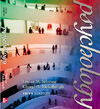Infants' Conditioned ResponsesTeachers know well how difficult it can be to stop students from doing
something their parents reward, like yelling out answers to questions. The
reinforcement the children receive at home can overwhelm the teachers'
efforts. Heimann and Meltzoff studied learning in nine-month-old United
States and Swedish infants, and discovered parents' conditioning can
have powerful effects, even on babies. The researchers showed the infants a motion they could make with a new
toy, such as pressing a button, distracted the babies for ten minutes, and
then measured how many times the infants made that motion in twenty
seconds. Both the U.S. and the Swedish infants imitated the researchers,
despite the delay. However, the Swedish babies took 30 seconds to make
their response, as opposed to 20 seconds for the U.S. babies. U.S. infants
may be faster because parents in the United States tend to be "bouncy,"
exaggerating their voices and motions more when they speak to children
than parents in Sweden, where adults value being cautious and reserved.
The infants in the study exhibited behavior that would be reinforced by
their parents, and responded to the laboratory stimuli the same way they
responded to events at home. |



 2002 McGraw-Hill Higher Education
2002 McGraw-Hill Higher Education

 2002 McGraw-Hill Higher Education
2002 McGraw-Hill Higher Education